

William Capon was an English artist.


William Capon was an English artist.
Capon, whose father was also an artist, was born at Norwich on 6 December 1757, [1] and in early life practised as a portrait painter. [2]
Capon went to London, where he became an assistant to the architect and scene-painter Michael Novosielski, [1] and was employed on the decorations of Ranelagh Gardens and the Italian Opera-house. He was afterwards employed by John Kemble as scene painter for Drury Lane Theatre, which was rebuilt in 1794. In later years he became celebrated as an architectural draughtsman. [2] In the company of the antiquarian John Carter he recorded ancient buildings in Westminster, including some buildings which were scheduled to be demolished. [1] He was appointed Architectural Draughtsman to the Duke of York in June 1804. [1] He occasionally exhibited at the Royal Academy. [2]
He died at his home in North Street Westminster in 1827. [1]
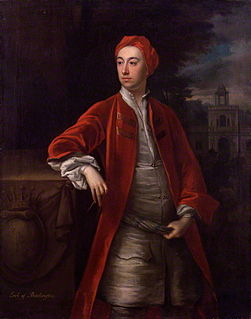
Richard Boyle, 3rd Earl of Burlington and 4th Earl of Cork, was an Anglo-Irish architect and noble often called the "Apollo of the Arts" and the "Architect Earl". The son of the 2nd Earl of Burlington and 3rd Earl of Cork, Burlington never took more than a passing interest in politics despite his position as a Privy Counsellor and a member of both the British House of Lords and the Irish House of Lords.
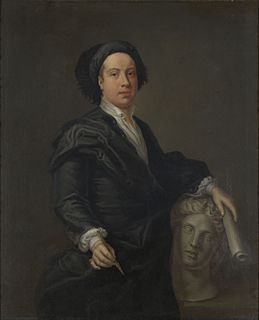
William Kent was an eminent English architect, landscape architect, painter and furniture designer of the early 18th century. He began his career as a painter, and became Principal Painter in Ordinary or court painter, but his real talent was for design in various media.

A Gesamtkunstwerk is a work of art that makes use of all or many art forms or strives to do so. The term is a German loanword which has come to be accepted in English as a core term in aesthetics.

James Wyatt was an English architect, a rival of Robert Adam in the neoclassical and neo-Gothic styles. He was elected to the Royal Academy in 1785 and was its president from 1805 to 1806.

Joseph Bonomi the Elder was an Italian architect and draughtsman who spent most of his career in England where he became a successful designer of country houses.

Augustus Charles Pugin, born Auguste-Charles Pugin, (1762–1832) was an Anglo-French artist, architectural draughtsman, and writer on medieval architecture. He was born in Paris, then the Kingdom of France, but his father was Swiss, and Pugin himself was to spend most of his life in England.

John Vanderbank was a leading English portrait painter who enjoyed a high reputation during the last decade of King George I's reign and remained in high fashion in the first decade of King George II's reign. George Vertue's opinion was that only intemperance and extravagance prevented Vanderbank from being the greatest portraitist of his generation, his lifestyle bringing him into repeated financial difficulties and leading to an early death at the age of only 45.

Joseph Michael Gandy (1771–1843) was an English artist, visionary architect and architectural theorist, most noted for his imaginative paintings depicting Sir John Soane's architectural designs. He worked extensively with Soane both as draughtsman and creative partner from 1798 until 1809 when he set up his own practice.
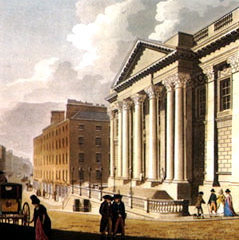
James Malton (1761–1803) was an Irish engraver and watercolourist, who once taught geometry and perspective and worked as a draughtsman in the office of the celebrated Irish architect James Gandon.
Thomas Malton, "the younger", was an English painter of topographical and architectural views, and an engraver. J. M. W. Turner and Thomas Girtin were amongst his pupils. He is designated "the younger" to differentiate him from his father Thomas Malton, the elder.
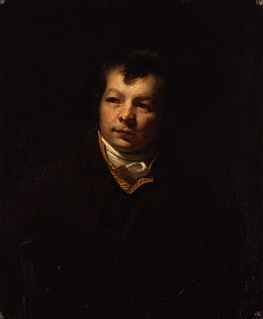
George Clint was an English portrait painter and engraver, especially notable for his many theatrical subjects.
Johannes Antiquus ) was an eighteenth-century Dutch painter.
James Caldwall, (1739–1822) was an English draughtsman and engraver.

James Sillett was an English still life and landscape artist. He showed himself to be one of the most versatile of the Norwich School of painters: although the great majority of his works were still lifes and landscapes, he was also a drawing master and a miniaturist. His botanical paintings illustrations have been praised for their accuracy and attention to detail. These and his still life paintings are considered to be his best work, with some experts ranking him with William Jackson Hooker, whose illustrations were both accurate and charming. Sillett's own accurate depictions of plants were often used for book illustrations. His paintings often have an academic style, influenced by the masters of the eighteenth century in a way that set him apart from his Norwich contemporaries. He exhibited at the Royal Academy between 1796 and 1837.
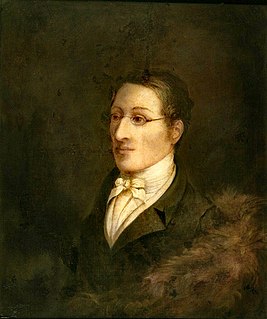
John Cawse was a British painter and caricaturist.
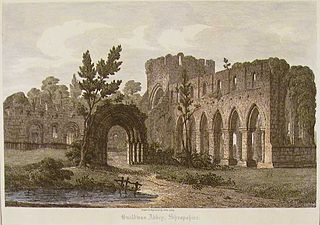
John Coney (1786–1833) was an English architectural draughtsman and engraver.
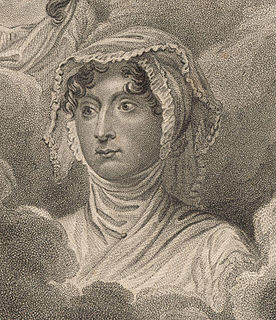
William Marshall Craig was an English painter who exhibited at times at the Royal Academy, from 1788 until 1827.
George Maddox was an architect, draughtsman, painter and teacher.
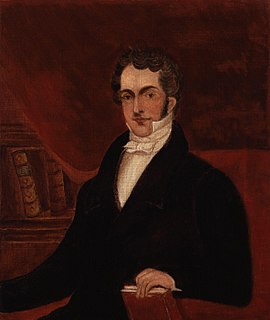
Thomas Forbes Walmisley was an organist, and a composer of church music and of glees.
William Riviere (1806–1876) sometimes Rivière, was an English painter and art educator.
Attribution: